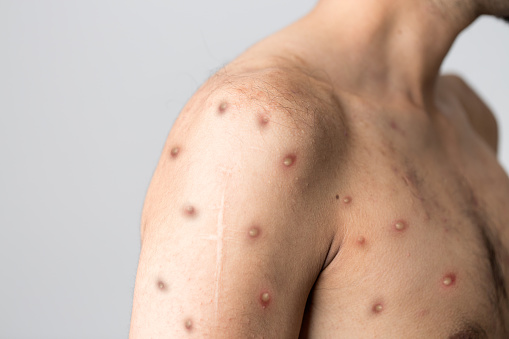Small airways disease is a condition in which the air passages in the lungs are abnormally narrow. The disease is caused by a lack of oxygen. This results in a rise in pulmonary vascular resistance and widespread hypoxic vasoconstriction. It is also associated with compensatory polycythemia and increased cardiac burden. The primary cause of death in patients with small airways disease is right-sided heart failure. The other contributing causes of death include obstructive respiratory failure and bronchopneumonia.
How serious is small airway disease?
Small airway disease is a significant feature of chronic obstructive pulmonary disease (COPD). It is a leading cause of airway obstruction and a preventable and treatable condition. It is associated with poor spirometry results, increased lung hyperinflation, and poor health status. Unfortunately, treatment is limited by a lack of early detection. To help overcome this limitation, studies are needed to assess the role of novel drug formulations and inhalers.
Early detection of small airway disease requires specific diagnostic tests. Imaging tests, such as CT and MRI, can detect abnormalities in the lungs. These specialized tests can detect early abnormalities and halt disease progression. Conventional spirometry is not sensitive enough to detect small airway disease at its earliest stages. Patients may experience years of progressive breathlessness before being diagnosed.
In the case of patients with COPD, small airway disease is associated with increased GOLD severity and deterioration. This is particularly true of patients with severe COPD, which can affect their daily life and health status. Furthermore, small airway disease is implicated in the development of airflow limitation in both the predominant COPD phenotypes.
What is the treatment for small airways disease?
Treatment for small airways disease depends on the severity and type of the disease. There are three main types of small airways disease: follicular, granulomatous, and cellular. Each type has a distinctive physiologic and pathological profile. In patients with follicular bronchiolitis, the airways may be narrowed and blocked.
Anti-inflammatory agents, inhaled antibiotics, and monoclonal antibodies are commonly used. Some people may also receive mucolytic agents, which are compounds that dissolve mucus in the lungs. Other drugs used to treat small airways disease include inhaled macrolide antibiotics, which may have a lower risk of systemic toxicity.
Diagnostic tests for small airways disease include CT scans. A CT scan can measure the percentage of emphysema and lung parenchyma that is damaged. This CT scan can also assess the diameter of the airway and the thickness of the airway wall.
What causes small airways in the lungs?
The pathogenesis of small airways in the lungs is a mystery. Researchers are not sure how the disease develops, but they believe it is related to inflammation and remodeling of the airways. The disease results in the blockage of small airways, preventing air from being exhaled. This is a hallmark of many obstructive airway diseases, including asthma and chronic obstructive pulmonary disease (COPD).
The bronchial tree has many other functions, including removing pollutants from inspired air before it reaches the respiratory portion of the lung. The effectiveness of airways depends on their branching pattern, composition, and integrity, as well as the interaction of diverse structural components. The structure of airway walls is optimized for maintaining patency, but chronic exposure to cigarette smoke can alter the structure of small airways.
Symptoms of small airways disease include increased inflammation and mucus in the lungs. These changes cause a decline in forced expiratory volumes in one second and other measures of airflow limitation. These symptoms can make activity difficult or impossible.
Is small airway disease the same as asthma?
It is not yet clear whether small airway disease and asthma are related. A recent study suggests that the former may occur separately. Those with a high FEV1 baseline showed a lower rate of asthma exacerbations. The researchers suggest that a significant contribution of FEV1 to the risk of asthma exacerbations comes from other factors.
The study was cross-sectional in nature and compared patients with well-controlled asthma with those with recurrent asthma attacks. The patients with recurrent asthma episodes had abnormalities in the small airways, including increased closing capacity and volume. The authors suggest that these abnormalities may be an early warning sign of exacerbations.
A recent systematic review of asthma found that small airways were involved in up to 50% of the cases. These findings were based on 15 studies, which evaluated the size of the airways using several different techniques. The authors concluded that 50 to 60% of people with persistent asthma have small airway disease. In children, the diagnosis can be made using FeNO and nitrogen washout.
Can small airway disease be cured?
Although the exact cause of small airway disease is unknown, it is thought to be related to inflammation or remodeling of the airway walls. These abnormalities cause small pockets of air to remain in the airways and prevent exhalation. This pattern is common to several obstructive airway diseases, including asthma and chronic obstructive pulmonary disease.
There is a need for better methods of diagnosing small airway disease in asthmatics. These measurements involve the use of new imaging techniques that can detect distal airway disease and determine its severity. But while these methods are promising, none has been proven to be a good fit to correlate lung pathology with clinical outcomes.
Some biologic drugs have shown promising results in patients with eosinophilic asthma. These drugs are known to improve ventilation inhomogeneity, a measure of the small airway’s ability to pass air. The researchers studied 20 patients with severe eosinophilic asthma and found that the improvements in ventilation inhomogeneity correlated with improvements in symptom scores.
How do you get small airways disease?
Small airways disease is a major cause of COPD, affecting at least three quarters of patients. The disease can be caused by a variety of conditions, including inflammatory bowel disease and connective tissue disease. People with certain immune deficiencies are also at risk. Certain noxious airborne substances may also lead to small airway dysfunction.
Affected patients may develop a diffuse or focal inflammatory phenotype. These findings should be interpreted in light of imaging and clinical data. Some cases may progress from a primary bronchiolar disorder to secondary changes in the lung. This is shown in Figure 5. Other morphological changes may be secondary to a larger airway disease, as in Figure 5.
Is small airway disease the same thing as COPD?
COPD patients are likely to have small airway disease, which is a significant cause of resistance to airflow. This disease affects the bronchioles, which are the smallest airways in the body. They are just 2mm wide, and their resistance to airflow increases dramatically as a result of small airway disease.
The diagnosis of small airway disease requires a multidisciplinary approach integrating multiple data, including the patient’s medical history, CT scan patterns, and pulmonary function tests. Occasionally, histological findings can be useful in making a diagnosis. However, in some patients, a biopsy may not be possible. Another source of additional information is the patient’s response to therapy. For example, patients with diffuse panbronchiolitis may show dramatic improvements when given long-term macrolide therapy.
Expiratory flow limitation and gas trapping are common symptoms of small airway disease. It causes decreased inspiratory and expiratory capacity, and reduces the patient’s ability to exercise. It is also associated with decreased health-related quality of life.
How can I improve my airways?
To address the growing burden of small airways disease, we must identify the causes and identify therapies that can improve lung function. Fortunately, some treatments have proven to be effective. The most effective way to control small airways disease is prevention. This can be achieved by improving smoking cessation programs and reducing the amount of air pollution and biomass fuels in the environment.
Small airways are defined as non-cartilaginous airways smaller than 2 mm in internal diameter. They are found from the eighth generation of airways down to the periphery of the lung, where they contribute minimally to airway resistance. They are considered the lung’s “quiet zone.” The small airways are important in the transition from normal to abnormal behavior of the bronchial tree. Although they contribute very little to airway resistance, they have a significant influence on pulmonary function. In asthma, they are the major site of airflow limitation, and the treatment of this condition is targeted toward the improvement of small airways function.



